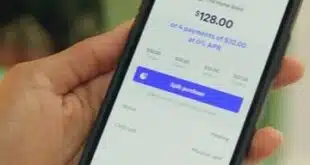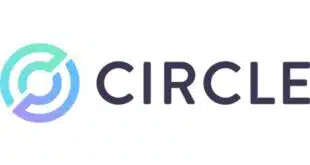EMV is getting faster at checkout, at least for customers. Now, as smaller businesses look to adopt chip card acceptance, swifter transactions may have larger implications.
Shoppers who try an EMV card at the checkout counter and are turned off by the tortoise-like pace of the transaction are the bane of retailing. It’s not uncommon for 10 seconds or more to pass between insertion of the card in the terminal and the signal to pull it out.
That lag time has soured consumers on EMV and disturbed merchants, who worry about transaction abandonment, longer checkout lines, and lost sales. Last fall, merchant processor and point-of-sale provider Cayan issued an estimate that EMV transaction time across all U.S. merchants was totaling 116 million hours per year.
The pokey transactions create yet another headache, this one affecting both merchants and cardholders yet going largely undernoticed: abandoned cards. People are so anxious to grab their goods and go, they forget they left their card in the terminal. That forces merchants to devote scarce resources to track down the customer. “We hate it when they leave their card,” says Katie MacDonald, director of marketing at New Seasons Market, a Portland, Ore.-based grocery chain.
‘We Said We’d Help’
Now, though, change is afoot. Last summer, Visa Inc. and Mastercard Inc. introduced software specifications that dropped those 10-second transactions to around 4.5 seconds. Developers with a number of value-added resellers were then able to write code for terminals that chipped even more time off.
The first was a San Francisco startup called Index, whose programmers took the dip time down to 2.5 seconds. Index installed the swifter processing in checkout terminals at 24 stores in Oregon and California operated by New Seasons and its New Leaf Community Markets unit.
But the company didn’t stop there. Since then, it has shaved the wait time down to about 1 second and introduced its own gateway for clients. New Seasons has adopted both the 1-second software and the gateway. “We heard from a lot of retailers, and we said we’d help,” says Marc Freed-Finnegan, chief executive at Index.
But getting such technology into a significant number of stores can be a frustrating project. The U.S. point-of-sale market is perhaps the most fragmented on the planet. The result is, while the number of retailers running faster EMV is climbing fast, they still represent a small fraction of all merchants.
At least 42,000 U.S. merchants are running Visa’s Quick Chip technology, up from around 10,000 early in the year, according to Stephanie Ericksen, vice president of global risk products at the card network. The exact number is hard to pin down, she says, because an accurate total depends on timely reporting from all value-added resellers and other installers.
By contrast, about 70% of small merchants expected to have EMV installed in their stores by July, according to a recent National Retail Federation survey. Nearly all mid-size and large retailers are expected to have chip card acceptance in place by year’s end.
‘Your Hand Never Comes off the Card’
What’s really going on with faster EMV is more a matter of perception than anything else. With Quick Chip and other variants like M/Chip Fast from Mastercard, consumers can insert their card at any time during the transaction. But while the transaction seems faster to the cardholder, the total roundtrip from merchant to processor to issuer and back to merchant is little affected.
“When the transaction is completed and when the consumer can put her card back in her wallet are two different things,” says Randy Vanderhoof, executive director of the Princeton Junction, N.J.-based Secure Technology Alliance.
Quick Chip and its variants have dramatically speeded up the time the card has to spend in the terminal by bypassing authorization and messaging routines that were necessary in Europe, where EMV originated and where offline authorization was common, but are superfluous in the United States, which has long depended on online authorization.
With Quick Chip, for example, the card needn’t stay in the terminal through the time a total is arrived at for a basket of goods. Indeed, the cardholder can insert and pull out the card while the cashier is still ringing up the goods.
Index squeezed dip time even more by writing its own kernel, the software that controls the interaction between the card and the terminal. That’s largely what’s behind Index 1-second EMV, says Freed-Finnegan, though he is loath to add details. “Your hand never comes off the card,” he says.
Some payments geeks may remember Freed-Finnegan and his chief technology officer, Jonathan Wall, as part of the crew that helped launch Google Wallet in 2011. That product, which turned out to be the forerunner for Google’s current mobile wallet, Android Pay, laid the foundation for the pair’s later work on the POS side of payments. They walked away from Google to start Index in 2012.
“What we realized is that customers are walking around with really smart devices, but the other side of the counter is not so smart. So we set out to bring the same type of technology that’s in phones to the [retail] counter,” Freed-Finnegan says.
‘Sizable Delta’
Keeping merchants happy with EMV could prove crucial. It not only encourages more EMV installations, it could lay the groundwork for the emergence of contactless transactions.
That’s because merchants who were discouraged by the slow checkout lines they saw at stores that were early EMV adopters may change their minds because of Quick Chip and its refinements and put in EMV gear. That’s important for contactless acceptance because most if not all EMV terminals have contactless capability built in.
And as more contactless POS devices are installed, more places become capable of taking mobile wallets that depend on near-field communication, such as Apple Pay and Android Pay. That could address a common consumer complaint about mobile wallets: that few places accept them.
It could also encourage more issuers to put out so-called dual-interface cards, that is, cards that can perform both contact and contactless transactions. Right now, though, the added cost for a dual-interface card is a barrier.
“That delta can be sizable for smaller issuers,” says Visa’s Ericksen. There is, for example, “concern about having to re-issue these more expensive cards in the event of a data breach,” she notes.
A Higher Speed Limit
Still, yet speedier EMV is coming. “We’re not done yet in finding ways we can speed up the transaction,” says Vanderhoof. “Even better performance is still desired.”
How much better? “We’re going to get to the point where a contact EMV transaction is as fast as holding your device up to a terminal and blink, [the transaction] is gone,” Vanderhoof says. “I see that as a capability of contact EMV for merchants that want to make that investment.”
Index is thinking along similar lines. One current project is to raise what Freed-Finnegan refers to as a “speed limit” the EMV spec imposes on the function of reading and writing to chip cards at the terminal. With a higher speed limit, Index can compress dip time to 300 milliseconds, he says.
Right now, this is Index’s recommendation, but making it happen depends on action by EMVCo, the standards body controlled by Visa and the other global card brands.
Meanwhile, New Seasons is pretty happy with its first full year of Quick Chip, which now includes four months of experience with the 1-second variety. “It’s awesome,” says MacDonald. “It’s easier than swiping your card and it certainly makes the [cashiers’] jobs easier.”
But MacDonald says the biggest benefit to her company has been happier customers. “We’ve absolutely had customers comment that [Quick Chip] is really quick,” she says. The checkout, she says, “is such a central touchpoint” that adopting even faster Quick Chip software was a “no-brainer.”





